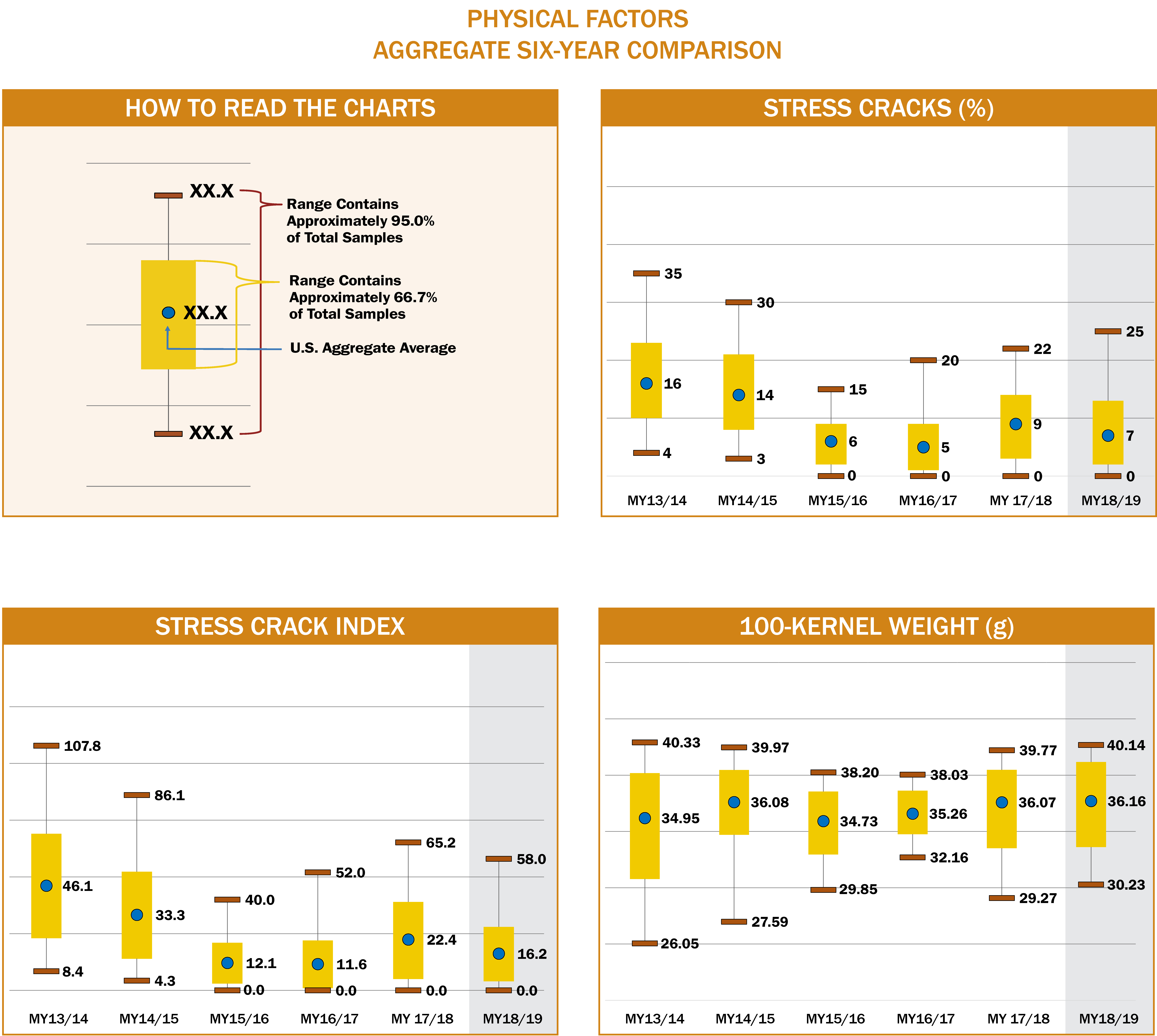Physical Factors
Physical factors are other quality attributes that are neither grade factors nor chemical composition. Physical factors include stress cracks, kernel weight, kernel volume, true density, percent whole kernels and percent horneous (hard) endosperm. Tests for these physical factors provide additional information about the processing characteristics of corn for various uses, as well as corn’s storability and potential for breakage in handling. These quality attributes are influenced by the physical composition of the corn kernel, which is in turn affected by genetics and growing and handling conditions. Corn kernels are made up of four parts: the germ or embryo, the tip cap, the pericarp or outer covering and the endosperm. The endosperm represents about 82% of the kernel and consists of soft (also referred to as floury or opaque) endosperm and of horneous (also called hard or vitreous) endosperm, as shown above. The endosperm contains primarily starch and protein, the germ contains oil and some protein, and the pericarp and tip cap are mostly fiber.

Summary: Physical Factors
- Average U.S. Aggregate stress cracks (7%) in 2018/2019 was lower than 2017/2018 and the 5YA, but higher than 2016/2017.
- Of the 2018/2019 export samples, 11.5% had 15% or higher stress cracks, compared with 16.0% in 2017/2018 and 5.6% in 2016/2017.
- Average U.S. Aggregate stress crack index (16.2) was lower than 2017/2018 (22.4) and the 5YA (25.1), but higher than 2016/2017 (11.6).
- In 2018/2019, 29.8% of the samples had a stress crack index of 20 or higher, compared with 48.7% in 2017/2018 and 19.7% in 2016/2017. This indicates that the percentage of samples with double or multiple stress cracks was lower than in 2017/2018, but higher than in 2016/2017.
- Average U.S. Aggregate 100-kernel weight (36.17 g) was slightly higher than 2017/2018 but much higher than 2016/2017.
- Average 100-kernel weight for the Pacific Northwest ECA (32.21 g) was lower than the Gulf ECA (37.49 g) and the Southern Rail ECA (36.52 g).
- Average U.S. Aggregate kernel volume
(0.28 cm3) was the same as 2017/2018 and the 5YA, but higher than 2016/2017. Average kernel volume at export was the same as that for 2018 harvest. - Average kernel volume for the Pacific Northwest ECA (0.25 cm3) was lower than for the Gulf (0.29 cm3) and Southern Rail ECAs
(0.28 cm3) in 2018/2019. The Pacific Northwest ECA had either the lowest or tied for the lowest average kernel volume for the previous three years and the 5YA, indicating Pacific Northwest usually has had smaller kernels than the Gulf and Southern Rail ECAs. - Average U.S. Aggregate kernel true density (1.288 g/cm3) was slightly higher than 2017/2018, 2016/2017 and the 5YA. For the 2018/2019 export samples, 85.3% had kernel true densities equal to or above 1.275 g/cm3, compared with 83.0% in 2017/2018 and 80.7% in 2016/2017.
- The average percent of whole kernels at export (85.2%) was higher than 2017/2018, but lower than 2016/2017 and the 5YA.
- The percentage of 2018/2019 export samples with whole kernels greater than or equal to 90.0% was 15.8%, compared to 14.7% in 2017/2018 and 39.3% in 2016/2017, indicating a much lower percentage of whole kernels in the last two years than in 2016/2017.
- Average U.S. Aggregate horneous endosperm (82%) was higher than 2017/2018, 2016/2017 and the 5YA. Of the 2018/2019 export samples, 81.7% had at least 80% horneous endosperm, in contrast to 72.0% in 2017/2018 and 25.3% in 2016/2017. Thus, in the last two years, a higher percentage of the samples contained high amounts of horneous endosperm than in 2016/2017.


